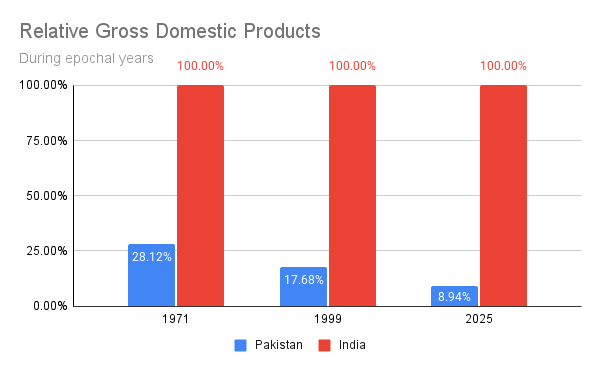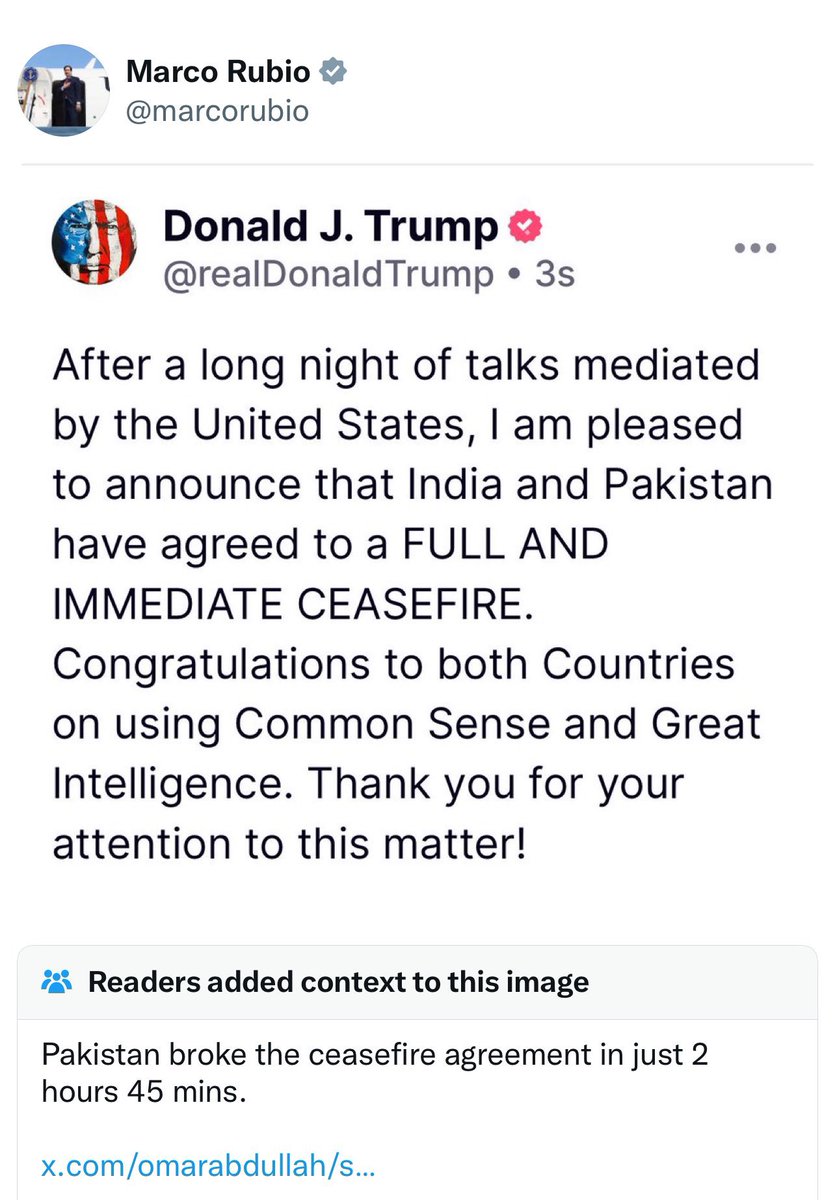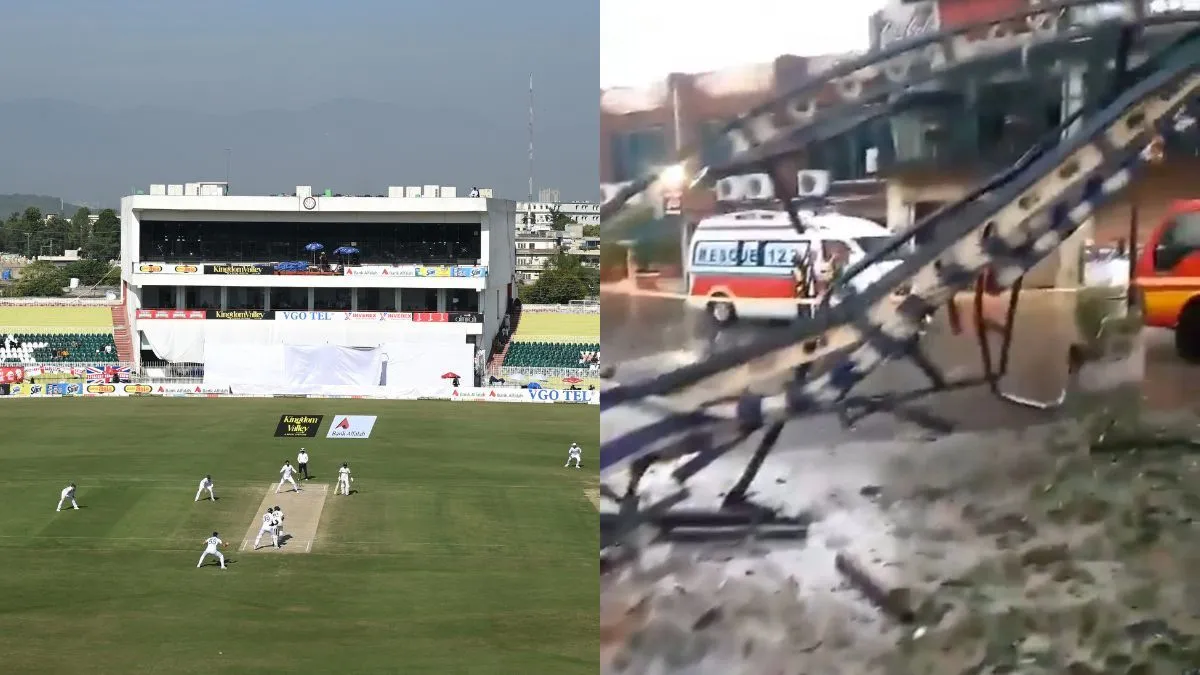The past few days have been very interesting. Lots of noise and very little signal on specific details. It's also clear that, having been mostly disconnected from BRF the past few days, the perspective here is more unique. Amidst the noise, a lot of important realities risk being lost, despite several posters, e.g. Anujan, covering them:
+ Establishment of new boundaries
This is the most important takeaway. Terror HQs, PA/PAF locations, all are both fair game and demonstrably within reach. On day 1 and 2, there were fears of escalation into full nuclear conflict, with India going beyond the clinical strikes on terror HQs and instead hitting PAF/PA establishments. But this turned out to be very sub-threshold.
Historically, Pakistan sends irregulars who do something spectacular. India then tries to carefully navigate its own self imposed and constrained boundaries. Attacking PAF/PA locations far inland, GHQ itself, plus terror HQs was not just incredibly escalatory before, but just not politically or militarily possible. It's just not the done thing to target Nur Khan and Sargodha.
Posters may prefer that GoI have just flattened them. But hitting them at all, and hitting them very precisely also conveys a message - the engagement boundary is no longer the LoC/IB but wherever within Pakistan, with warning hits on each of their most hardened military facilities.
* Growing power differential
At one time one TSP soldier was equal to 10 Indian soldiers. Today though, one Indian economy is equal yo 11 TSP economies, up from under 4 in 1971:

More in
xitter post. India has added more than one TSP to its economy every year in the 2020s.
As such, the parameters of engagement have changed. They're not really capable of truly threatening India anymore. What's more revealing this time is
they're also no longer in a position to define what the boundaries are anymore. Further, the new boundaries now lie within
their territory - they don't have the ability to define them within Indian territory. This is mostly because of the shockingly good strength of Indian ADS.
* Artillery and standoff capability is the future, artillery and cavalry are secondary
I knew nothing about our drone capabilities and very little about our ADS. It's clear however, that both are extremely - astonishingly - good. Across guns /Akash / MRSAM / S400, the Indian ADS was a revelation. Simultaneously, TSP's being relatively ineffective was also a revelation. It's fairly clear India simply chose to demonstrate it can hit every major base, but didn't go further than that. It's also rather clear that this capability is very recent - I wuold not have expected this even during Balakot era, i.e. half a decade ago.
* Survival is victory for Pakistan
Their assertions that they've won are very interesting. Fundamentally, they will now celebrate having survived. If you run across a grizzly and survive with some scratches, it's a victory. The problem is the grizzly was just warning you. So, I agree that they have achieved victory. The problem is that India wasn't fighting them in that war but was doing something else.
Regardless,
every instance of survival is victory. Ten years ago, India hitting {insert all air base and terror HQ names} would be unthinkable. Today, the fact that it didn't go beyond a few hits is victory. Tomorrow, whatever new threshold - e.g. India flattens one base but then hurriedly does ceasefire - will also be victory. This is normal. That's how they function.
* Substantial evolution from Balakot
Regardless of what really happened or did not in Balakot, Indian capabilities were not sufficient to deliver fully on the intent then. It's clear that 6 years hence, things have dramatically changed. Manned air combat has been replaced by drones and PGMs, with the ADS being the major differentiator in being able to hit without being hit.
What's likely to follow ?
* India should dramatically scale up its already successful ADS. Ensure Srinagar has the best in class, including against attack drone swarms. Every major Indian city will need an ADS, but especially NCR, Chandigarh, major Punjab cities and also places like Somnath and Ayodhya. The Indian MIC needs to be backed to deliver this. However, this plays to India's strengths - a vibrant drone ecosystem and what has historically been the strongest part of the MIC - missile development.
* The engagement boundary has been moved from the LOC/IB to wherever is deemed necessary within TSP. This should continue. Once in a while, India should combine intelligence with this capability to take out Chinese supplies down KH or an arriving Turkish freighter. This is now sub-threshold.
* Drones will also likely be augmented by UAVs/UCAVs - India needs to urgently focus on these. There's also a far better situation around propulsion development in this space vs manned fighter turbofans. UCAVs are far friendlier for the purposes of Indian intents around the new boundaries of engagement than manned air force platforms.
* TSP will invest in better ADS, but what ? The Chinese will spend a lot of time figuring out why their systems couldn't help. They and the Turks will look at how their drones underperformed. TSP will get better drones and ADS from them. India will need to scale up its own game on both fronts to get around those two.
* TSP can beg for and replace munitions but not food and water. They'll have to now have to make do with less of the latter. Summer will be harsh and a potential political crisis in Islamabad isn't impossible.



